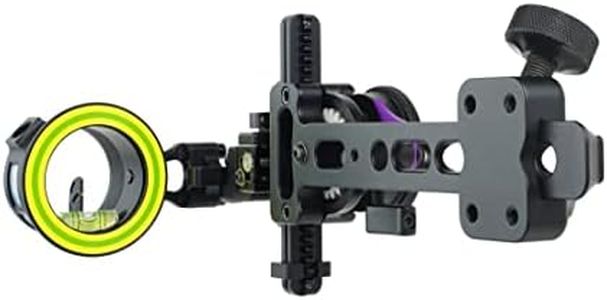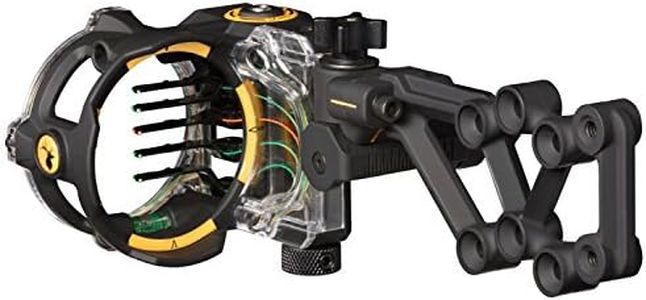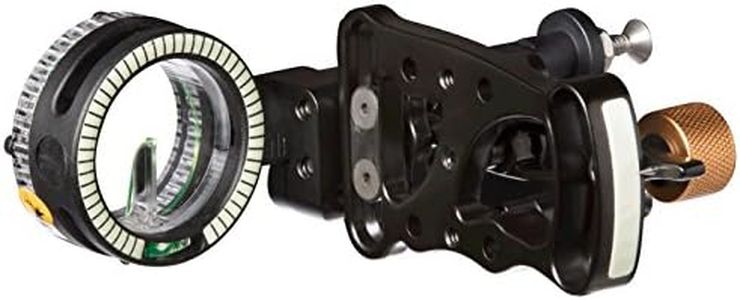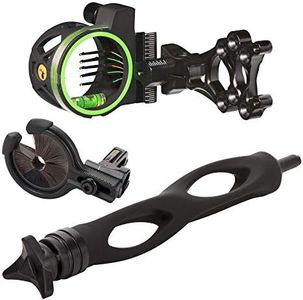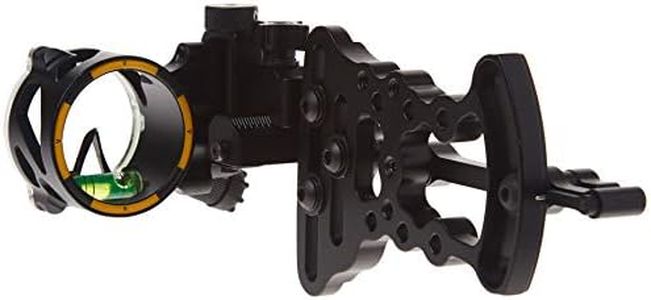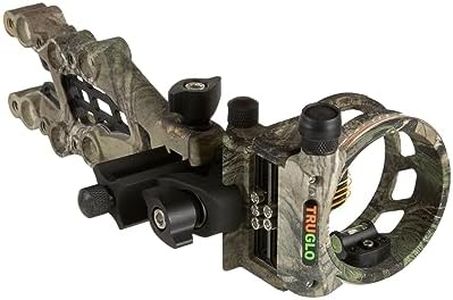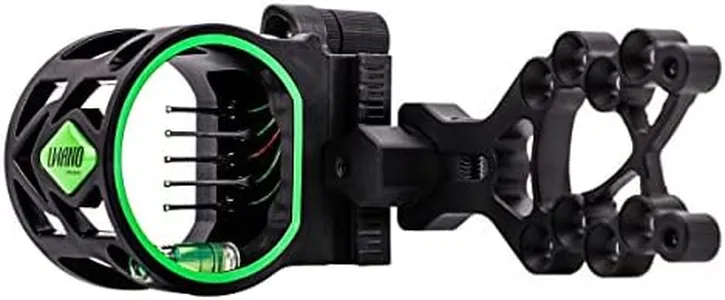We Use CookiesWe use cookies to enhance the security, performance,
functionality and for analytical and promotional activities. By continuing to browse this site you
are agreeing to our privacy policy
10 Best Bow Sights
From leading brands and best sellers available on the web.Recommended lists
Buying Guide for the Best Bow Sights
Choosing the right bow sight can make a big difference in your archery experience, whether you're a beginner or an experienced shooter. The right sight helps you aim more accurately and consistently, making your shots more reliable. When picking a bow sight, it's important to think about how and where you'll be using it—whether for target shooting, hunting, or both. Understanding the key features will help you find a sight that matches your needs and shooting style.Number of PinsThe number of pins on a bow sight determines how many preset distances you can aim for without adjusting your sight. Fewer pins (like 1-3) are simpler and less cluttered, making them great for beginners or those who shoot at consistent distances. More pins (4-7 or more) allow for quick aiming at various distances, which is useful for hunters or advanced shooters who need flexibility. Think about how many different distances you typically shoot at—if you mostly shoot at one range, fewer pins are easier to manage, but if you need to adjust for different distances quickly, more pins might be better.
Adjustability (Fixed vs. Movable Sights)Bow sights can be fixed or movable. Fixed sights have pins set for specific distances, while movable (or single-pin adjustable) sights let you slide the pin to match the exact distance. Fixed sights are faster for quick shots at known distances, while movable sights offer more precision for varying distances, especially in target shooting. If you shoot at a range with set distances, fixed sights are convenient. If you often shoot at unknown or changing distances, a movable sight gives you more accuracy.
Pin Size and BrightnessPin size refers to the thickness of the aiming points on your sight. Thinner pins allow for more precise aiming, especially at longer distances, but can be harder to see in low light. Thicker pins are easier to see but can cover more of your target. Many sights use fiber optics to make pins brighter, which helps in low-light conditions. If you shoot in bright daylight, pin size is less critical, but for hunting at dawn or dusk, brighter and slightly thicker pins can help you see your aim point clearly.
Material and DurabilityBow sights are made from materials like plastic, aluminum, or even carbon. Plastic sights are lightweight and affordable but may not be as durable. Aluminum and carbon sights are stronger and can handle rough use, making them better for hunting or frequent outdoor use. If you need a sight for occasional target practice, a basic material is fine, but for regular or rugged use, choose a more durable material.
Sight LevelMany bow sights include a built-in bubble level to help you keep your bow steady and avoid tilting, which can throw off your shot. This is especially important for longer shots or when accuracy is critical. If you’re just starting out, a level can help you develop good habits, and for experienced shooters, it’s a must-have for consistent accuracy.
Mounting Options and AdjustabilitySome sights offer more ways to adjust their position on your bow, such as vertical and horizontal adjustments. This helps you fine-tune your aim and fit the sight to your shooting style. More adjustability is helpful if you want to customize your setup, while simpler sights are easier to set up and use. Think about whether you want to tweak your sight for perfect alignment or prefer a straightforward setup.
